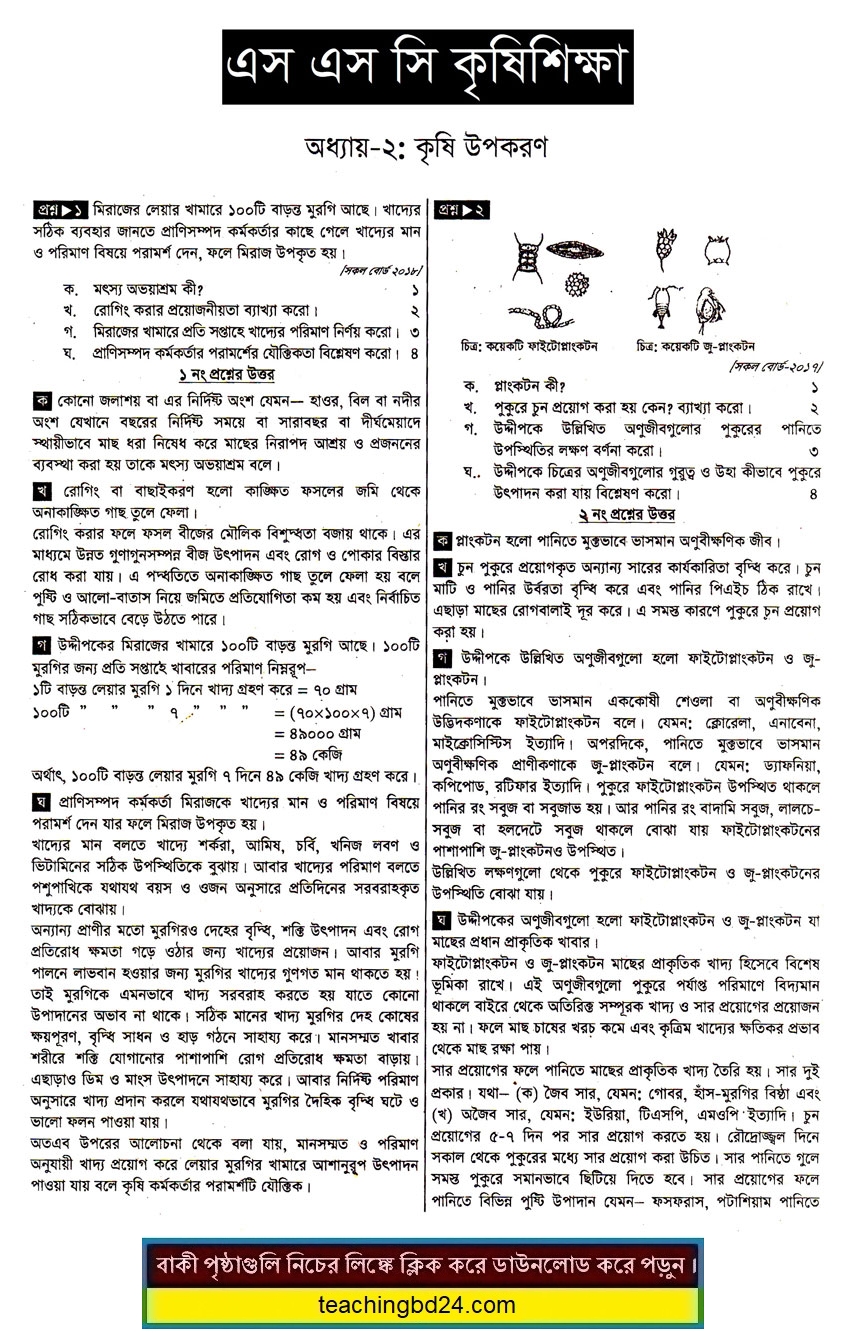Chapter 2. Agricultural machinery. Crop seed and propagating materials are the most important inputs among the basic elements of crop production. We can produce crop year by year using these inputs. Besides, using these inputs, we can also acclimatize a new crop in a country, conserve the genetic characteristics of a crop and improve a crop by applying biotechnology.
Chapter 2. Agricultural machinery

Botanically, a fertilized and mature ovule containing an embryo in a dormant state is called the seed. This type of seed is also known as crop seed or true seed or botanical seed. e.g., rice, wheat, mustard, sesame, bean, cowpea, tomato, cauliflower, chili. Cumin, dhaincha berry, jackfruit, etc.
Agricultural machinery is machinery used in farming or other agriculture. There are many types of such equipment, from hand tools and power tools to tractors and the countless kinds of farm implements that they tow or operate. Diverse arrays of equipment are used in both organic and nonorganic farming. Especially since the advent of mechanized agriculture, agricultural machinery is an indispensable part of how the world is fed.
With the coming of the Industrial Revolution and the development of more complicated machines, farming methods took a great leap forward. Instead of harvesting grain by hand with a sharp blade, wheeled machines cut a continuous swath. Instead of threshing the grain by beating it with sticks, threshing machines separated the seeds from the heads and stalks. The first tractors appeared in the late 19th century.
Power for agricultural machinery was originally supplied by ox or other domesticated animals. With the invention of steam power came the portable engine, and later the traction engine, a multipurpose, mobile energy source that was the ground-crawling cousin to the steam locomotive. Agricultural steam engines took over the heavy pulling work of oxen and were also equipped with a pulley that could power stationary machines via the use of a long belt. The steam-powered machines were low-powered by today’s standards but, because of their size and their low gear ratios, they could provide a large drawbar pull. Their slow speed led farmers to comment that tractors had two speeds: “slow, and damn slow.”
The internal combustion engine; first the petrol engine, and later diesel engines; became the main source of power for the next generation of tractors. These engines also contributed to the development of the self-propelled, combined harvester and thresher, or combine harvester (also shortened to ‘combine’). Instead of cutting the grain stalks and transporting them to a stationary threshing machine, these combine cut, threshed, and separated the grain while moving continuously through the field.
Combines might have taken the harvesting job away from tractors, but tractors still do the majority of work on a modern farm. They are used to push/pull implements—machines that till the ground, plant seed, and perform other tasks.
Tillage implements prepare the soil for planting by loosening the soil and killing weeds or competing plants. The best-known is the plow, the ancient implement that was upgraded in 1838 by John Deere. Plows are now used less frequently in the U.S. than formerly, with offset disks used instead to turn over the soil, and chisels used to gain the depth needed to retain moisture.
teachingbd24.com is such a website where you would get all kinds of necessary information regarding educational notes, suggestions and questions’ patterns of school, college, and madrasahs. Particularly you will get here special notes of physics that will be immensely useful to both students and teachers. The builder of the website is Mr. Md. Shah Jamal Who has been serving for 30 years as an Asst. Professor of BAF Shaheen College. He expects that this website will meet up all the needs of Bengali version learners /students. He has requested concerned both students and teachers to spread this website home and abroad.
Discover more from Teaching BD
Subscribe to get the latest posts sent to your email.



